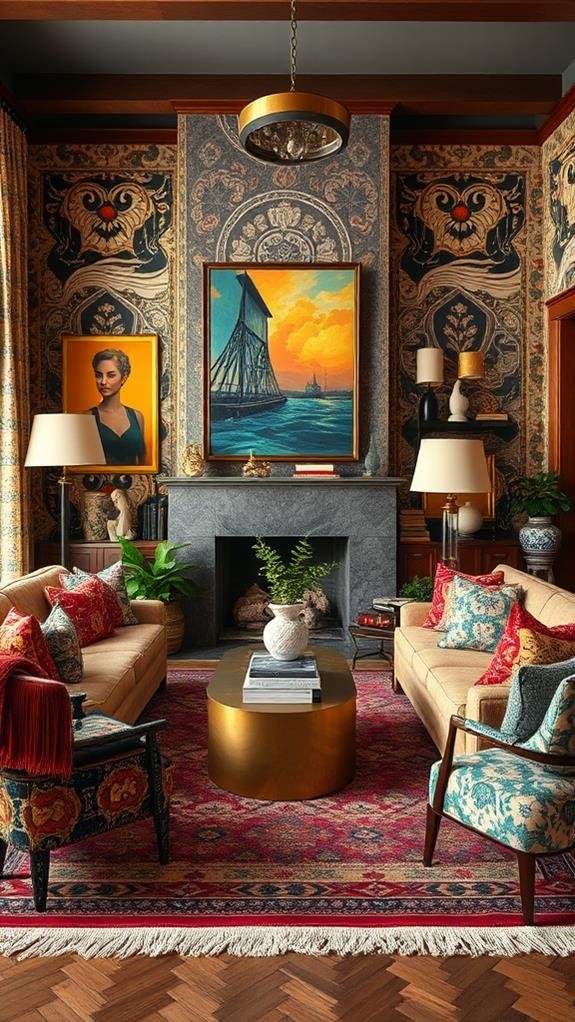10 Essential Tips for Mastering House Interior Design
To master house interior design, start by defining your unique style with colors and textures that express your personality. Understand space planning by arranging furniture for easy movement and creating cozy activity zones. Choose a color palette of 3-5 shades to set the mood, and focus on lighting by layering ambient, task, and accent options. Select quality furniture that fits both your style and space. Personalize your home with accessories, create eye-catching focal points, and maintain balance by mixing textures. Finally, don’t hesitate to experiment with new ideas, as your design journey can be exciting and constantly changing! You’ll uncover even more helpful tips ahead!
Key Takeaways
- Define your style through mood boards to reflect personal preferences in colors, patterns, and textures.
- Plan room layouts for functionality, ensuring movement flow and creating designated activity zones.
- Choose a cohesive color palette of 3-5 shades to evoke desired emotions and establish room balance.
- Layer lighting with ambient, task, and accent sources to enhance the ambiance and usability of spaces.
- Personalize your space with accessories, integrating plants and unique decor to reflect your individuality.
Define Your Style
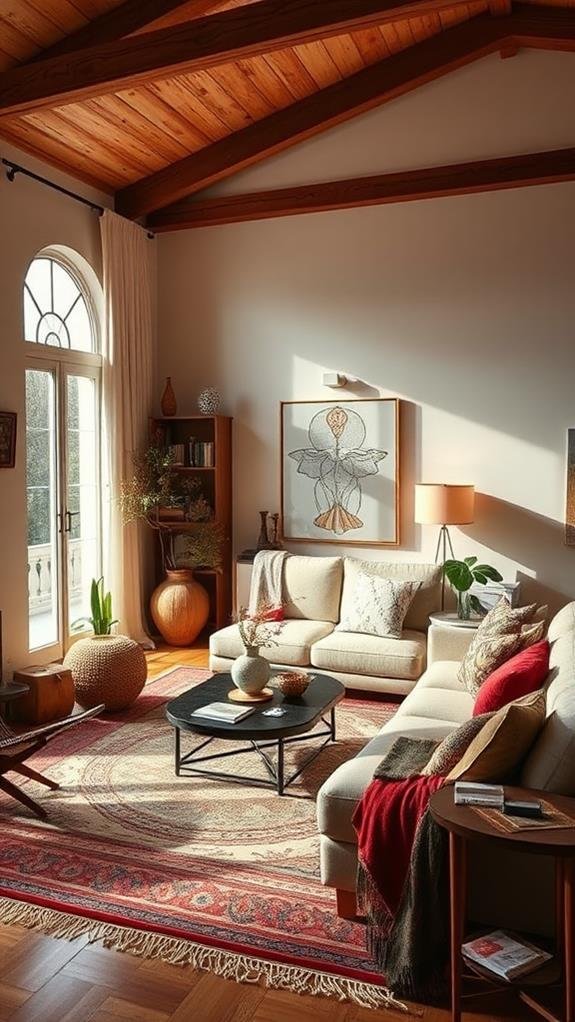
Defining your style is the foundation of successful interior design, transforming a house into a home that reflects your personality. Start by considering what colors, patterns, and textures resonate with you. Are you drawn to soft, muted tones or vibrant, bold colors?
Look through magazines, visit homes, or scroll online for inspiration. Create a mood board that showcases your preferences—this helps solidify your vision. Think about the feelings you want your space to evoke. Do you crave coziness, elegance, or a sense of adventure?
Once you identify your style, it’ll guide your choices in furniture, decor, and layout. Remember, there are no strict rules; it’s about what makes you feel comfortable and happy in your own space.
Understand Space Planning

Once you’ve established your style, the next step is to understand space planning. This means figuring out how to arrange furniture and other items in a way that makes your space feel open and functional.
Start by measuring your room and noting where doors and windows are located; this will help you visualize the layout. Consider the flow of movement, ensuring there’s enough space to walk around comfortably.
Create zones for different activities, like lounging or dining, to make your home more organized. Don’t forget about the height of furniture, as taller pieces can affect how spacious a room feels.
Choose a Color Palette

As you create a comfortable and inviting space, choosing a color palette is essential for setting the mood.
Start by selecting a few colors that resonate with you and your home’s vibe. Think about the emotions each color evokes; for example, blues are calming, while yellows can be cheerful.
It’s also important to contemplate how colors interact with each other. Try to limit your palette to three to five shades for a cohesive look—one main color, a couple of accent colors, and possibly a neutral.
Don’t forget to test your chosen colors on your walls; lighting can change how they appear.
Focus on Lighting

Proper lighting can make a world of difference in your interior design. It sets the mood and highlights your home’s best features.
Start by layering your lighting. Combine ambient, task, and accent lighting to create a balanced atmosphere. Ambient lighting provides overall illumination for the room, while task lighting helps you with specific activities, like reading or cooking.
To draw attention to artwork or architectural details, use accent lighting.
Don’t forget about natural light! Open curtains during the day to let sunshine in, which can make your space feel more inviting.
Consider using dimmers for flexibility and control over brightness. With thoughtful lighting choices, you’ll transform your home into a cozy retreat that reflects your style beautifully.
Select Quality Furniture
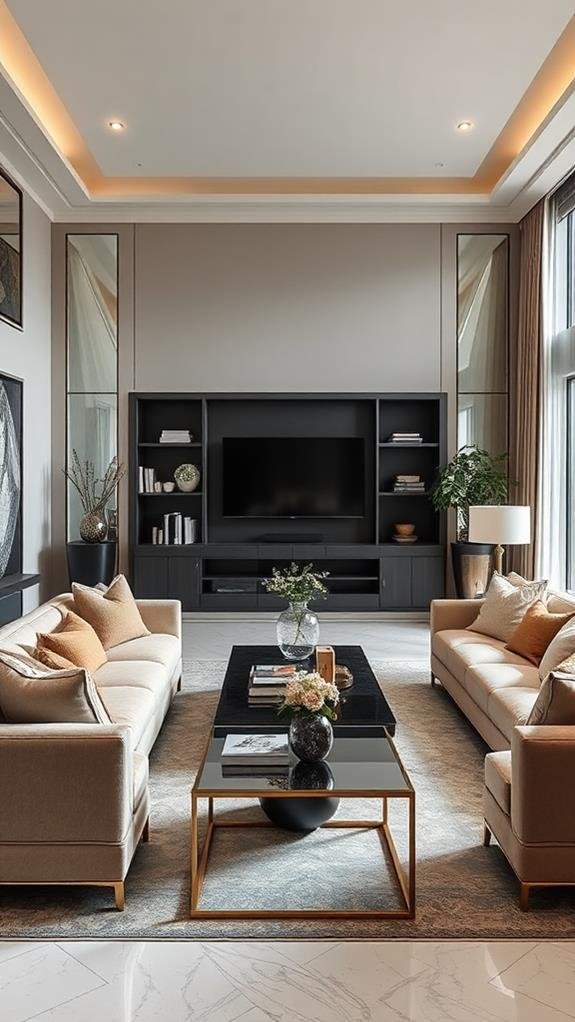
Choosing quality furniture is essential for creating a stylish and enduring interior. When you invest in durable and well-made pieces, you’re guaranteeing they’ll last longer and withstand daily use.
Look for solid wood construction, comfortable cushions, and sturdy upholstery that can handle wear and tear. It’s also important to choose furniture that reflects your personal style and complements your home’s theme.
Don’t just jump at the lowest price; consider the long-term value of your purchases. You’ll want each piece to not only be functional but also visually appealing.
Measure your spaces before buying to ascertain a good fit. Quality furniture can transform a room, making it both inviting and stylish for years to come.
Incorporate Texture and Patterns
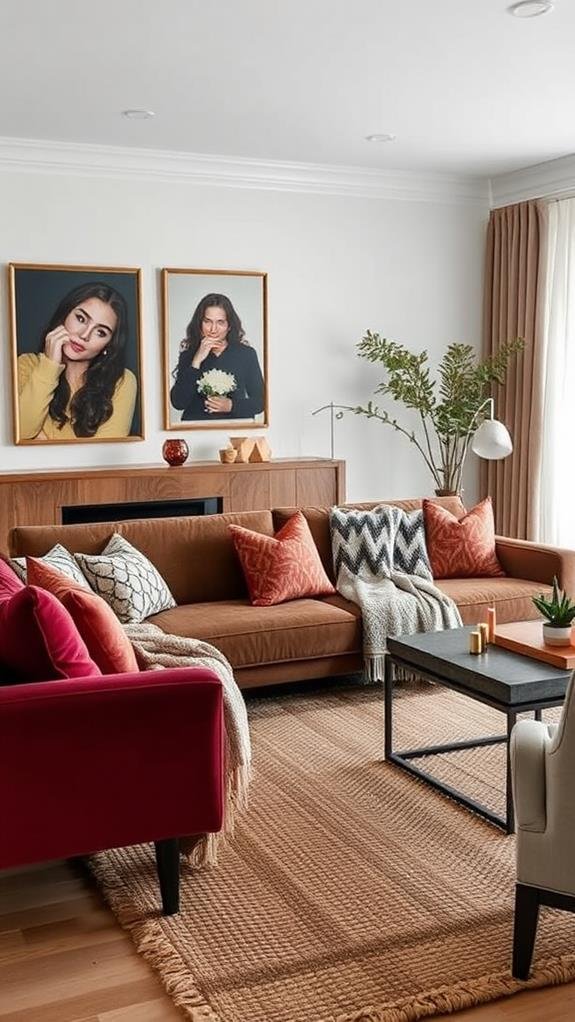
When you want to bring life and depth to your interior space, incorporating texture and patterns is essential.
Start with your walls; a bold wallpaper can create a striking backdrop, while textured paint adds warmth. Next, consider fabrics—mix smooth surfaces like silk curtains with coarse ones like a wool throw. This contrast creates visual interest.
Don’t forget about rugs; a patterned rug can anchor a room and draw the eye. You can also layer different textures—think of combining leather, wood, and metal for a modern look.
Finally, incorporate patterns in smaller details, like cushions or artwork, to tie everything together.
Personalize With Accessories
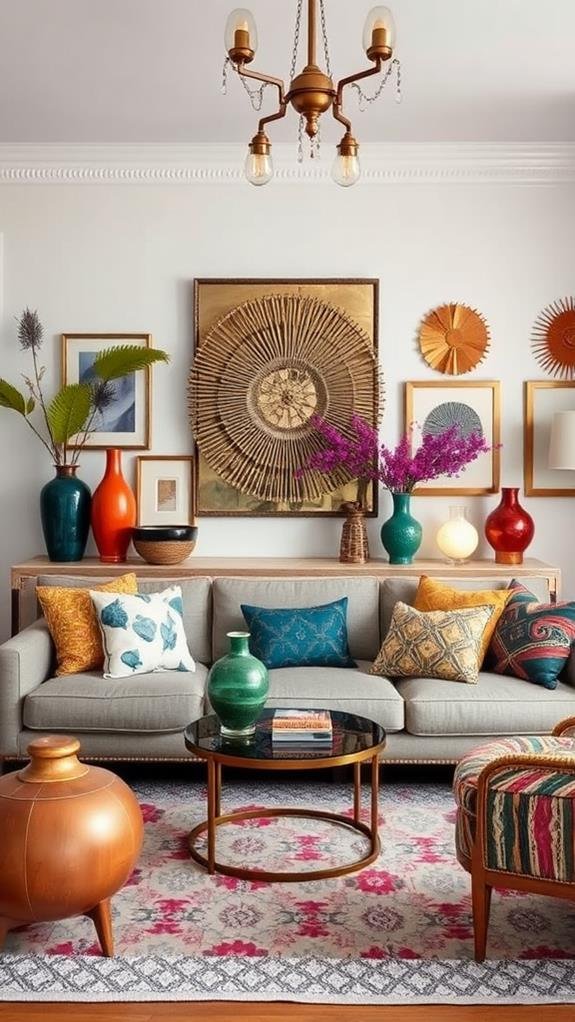
Accessories serve as the finishing touches that truly personalize your space and reflect your style. Think about adding items like throw pillows, wall art, and decorative items that speak to you.
For example, pillows with fun patterns can brighten up your couch, while framed photos or artwork can showcase your memories and interests.
Consider using plants, which not only add color but also bring life into your home.
Don’t forget about functional accessories, like stylish lamps and unique storage options, which can be both practical and beautiful.
By mixing different colors, textures, and shapes, you create a layered look that feels inviting.
Create Focal Points

Creating focal points in a room draws the eye and establishes a sense of hierarchy in your design. To achieve this, pick one or two standout features, like a striking piece of artwork or a unique piece of furniture. These elements will grab attention and guide your guests’ gaze.
You can also use colors or textures that differ from the rest of the room. For example, a bold accent wall can serve as a perfect focal point.
Lighting plays an essential role, too! A beautiful pendant light or a dramatic lamp can highlight your chosen feature.
Maintain Balance and Harmony

Balance and harmony in interior design are essential for creating a cohesive and inviting atmosphere. You want every element in your space to work together, so it feels comfortable and pleasing.
Start by using symmetry, such as placing identical lamps on either side of a sofa, which creates a sense of order. Color plays a big role too; choose a color palette that flows throughout the rooms.
You can also mix different textures and materials, like wood and metal, to add interest without overwhelming the space. Don’t forget about scale—matching the size of furniture with the room helps maintain balance.
Experiment and Evolve

Interior design is all about personal expression, and experimenting with different styles can lead to exciting transformations in your home.
Don’t be afraid to try bold colors, unique furniture, or unexpected patterns. Start small; maybe switch up your throw pillows or hang a different piece of art.
Mix and match these elements to see what resonates with you. Keep in mind that your environment should reflect who you are. If something doesn’t work out, it’s okay! You can always evolve your space.
Document your changes, as this can help you understand what styles you love most.
Conclusion
Ultimately, mastering house interior design takes a bit of time and practice, but by following these essential tips, you can create a space that truly reflects your personality. Remember to define your style, plan your space wisely, and pay attention to colors and lighting. With careful selection of furniture and accessories, along with a focus on balance and focal points, you’ll transform your home into a welcoming and beautiful environment that you’ll love. Happy decorating!


